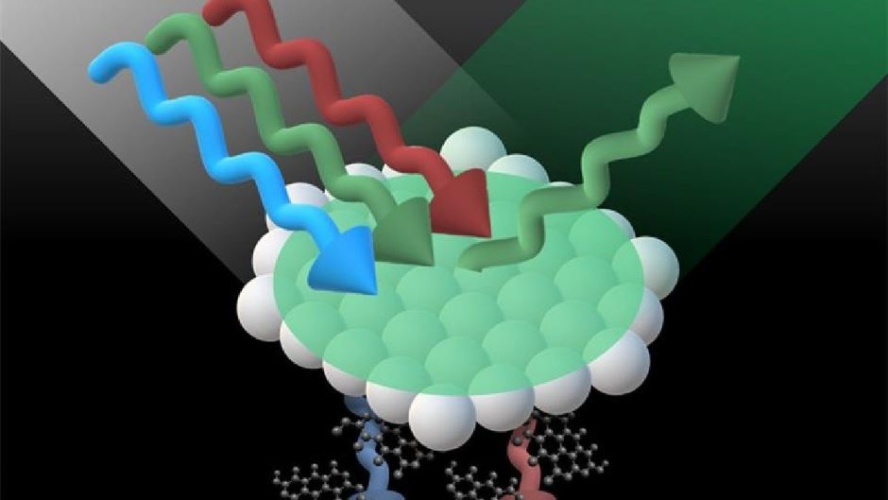
An international team of scientists, led by Surrey and Sussex Universities, has developed colour-changing, flexible photonic crystals that could be used to develop the sensors.
Iridescent tetra fish inspire material for new displays and camouflage
Graphene “fish scale” coating will make structural damage visible
The wearable, robust and low-cost sensors can reportedly respond sensitively to light, temperature, strain or other physical and chemical stimuli making them a promising option for visual sensing applications.
In a study published in Advanced Functional Materials, researchers outline a method to produce photonic crystals containing a minuscule amount of graphene resulting in a wide range of desirable qualities with outputs directly observable by the naked eye. Intensely green under natural light, the sensors turn blue when stretched or transparent after being heated.
In a statement, Dr. Izabela Jurewicz, lecturer in Soft Matter Physics at Surrey University’s Faculty of Engineering and Physical Sciences, said: “This work provides the first experimental demonstration of mechanically robust yet soft, free-standing and flexible, polymer-based opals containing solution-exfoliated pristine graphene. While these crystals are beautiful to look at, we’re also very excited about the huge impact they could make to people’s lives.”
Alan Dalton, Professor Of Experimental Physics at Sussex University’s School of Mathematical and Physical Sciences, said: ““Our research here has taken inspiration from the amazing biomimicry abilities in butterfly wings, peacock feathers and beetle shells where the colour comes from structure and not from pigments. Whereas nature has developed these materials over millions of years we are slowly catching up in a much shorter period.”
Potential applications include time-temperature indicators for intelligent packaging, where the sensors provide a visual indication if perishables have undergone undesirable time-temperature histories; or in finger print analysis where pressure-responsive shape-memory characteristics are attractive for biometric and anti-counterfeiting applications. According to the team, pressing the crystals with a bare finger can reveal fingerprints with high precision showing well-defined ridges from the skin. Further applications can include bio-sensing in point-of-care testing devices for respiratory viruses, or bio/health monitoring of athletes.
The research draws on Sussex University’s expertise in the liquid processing of two-dimensional nanomaterials, and Surrey’s experience in polymer colloids and combines it with expertise at the Advanced Technology Institute in optical modelling of complex materials.
Joseph Keddie, Professor of Soft Matter Physics at Surrey University, said: “Polymer particles are used to manufacture everyday objects such as inks and paints. In this research, we were able finely distribute graphene at distances comparable to the wavelengths of visible light and showed how adding tiny amounts of the two-dimensional wonder-material leads to emerging new capabilities.”
Sussex-based Advanced Materials Development (AMD) Ltd is working with the universities to commercialise the technology for smart sensors.
“Given the versatility of these crystals, this method represents a simple, inexpensive and scalable approach to produce multi-functional graphene infused synthetic opals and opens up exciting applications for novel nanomaterial-based photonics,” said AMD’s CEO John Lee. “We are very excited to be able to bring it to market in near future.”










Guest blog: exploring opportunities for hydrogen combustion engines
"We wouldn't need to pillage the environment for the rare metals for batteries, magnets, or catalisers". Batteries don't use rare...